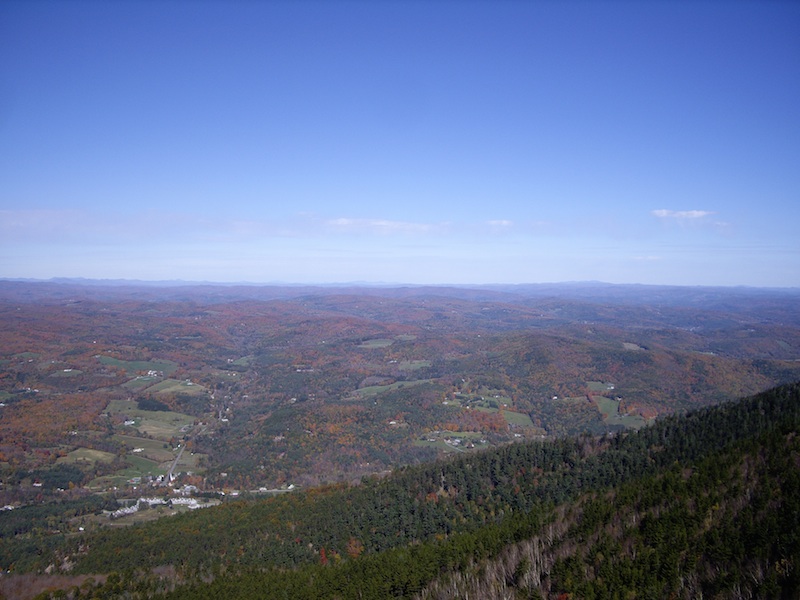 As some of you may know, the husband and I moved to the Northeastern U.S. about a month and a half ago. Since then, we have been immersed in the culture and have been confronted with questions about what it means to be Canadian and what it means to live in America. We have found ourselves wanting to try and bridge the apparent divide – I say apparent because, not surprisingly, we have realized that many Americans and much of American culture is not that different from Canadian culture. That said, being away from home gives one the opportunity to identify and assess the little differences.
As some of you may know, the husband and I moved to the Northeastern U.S. about a month and a half ago. Since then, we have been immersed in the culture and have been confronted with questions about what it means to be Canadian and what it means to live in America. We have found ourselves wanting to try and bridge the apparent divide – I say apparent because, not surprisingly, we have realized that many Americans and much of American culture is not that different from Canadian culture. That said, being away from home gives one the opportunity to identify and assess the little differences.
I would like to assert that Canadian’s don’t know a whole lot about America even though we’d like to think we do. Sure we’ve all laughed at the ignorant statements made on “Talking to Americans” and like to feel superior because “most Americans” can’t name all of our Provinces. But really, how many of us can name all 50 States? Before moving here, neither could I (to be covered in a future post). As part of our journey in A’murka I want to share a bit about our U.S. education with the hope that we can collectively better understand our neighbours to the south.
To start off my series, “Two Canucks In America”, we will look at Thanksgiving.
“What is the difference between Canadian and American Thanksgiving?” This question gets asked every single year around this time like clockwork. It is getting to the point that I would like to propose that it be added to the list of things that make Canadian Thanksgiving what it is: “Ok – prepare a meal of root vegetables and bake a pumpkin pie or other desert seasoned with cinnamon and nutmeg, check; display a centrepiece featuring a gourd or pinecones preferably made by a grade-schooler, check; have a conversation about why we have Thanksgiving a full month earlier than the U.S… oops, still have to do that one”. I am actually surprised that I didn’t already know the answer by heart at this point.

What is important to realize, if you didn’t already, is that the two events are essentially unrelated. Canada didn’t borrow Thanksgiving from the U.S. or vice versa, though I am sure people on both sides of the border would like to believe otherwise. From my assessment, it appears that the two events developed independent of one another, though there has been some crossbreeding with specific traditions over time.
After doing a little bit of Google research, this is what I have found:
What are the historical origins?
American Thanksgiving is largely tied to the Pilgrims at Plymouth Plantation, Massachusetts in the 1620. The harvest festival was a celebration of thanks at the end of the growing season and after a long, trying winter. The feast was shared with the local Wampanoag first nations tribe and included corn, fish, venison, and turkey. The Wikipedia page also notes that a larger Thanksgiving celebration held in 1623 likely took place on July 30 and since it was recognized due to an order from the Governor at the time (and not the church) it is likely “the first civil recognition of Thanksgiving in New England”.
The first Canadian Thanksgiving seems a little more loosely defined. In 1578, English explorer Martin Frobisher was trying to find the Northwest Passage and although he did not succeed, he made it back safely to what is now Newfoundland and a feast was held to give thanks for his safe arrival. Several sources also note that Samuel de Champlain and other French settlers, together with local first nations people also had feasts to give thanks after arriving in the new world. During the American Revolution, United Empire loyalists fled to Canada and it is suspected that we gleaned some Thanksgiving traditions from them (particularly the Turkey).
Why the difference in dates?
The dates of Canadian and American Thanksgiving are arbitrary in the sense that they are not directly related to the historical dates.
In Canada, Thanksgiving has been celebrated in November and October at various periods in time. After World War I, Thanksgiving was celebrated in the same week as Armistice Day (now Remembrance Day). However, in 1957 Parliament set the date of Canadian Thanksgiving to be the second Monday in October, likely to separate the two observances.
American Thanksgiving has also had floating dates throughout history, though the last Thursday in November was pretty standard. In the late 1930s President Roosevelt had moved the date of Thanksgiving to be one week earlier believing that it would boost the U.S. economy, however many people did not like this change and referred to it as Franksgiving. In 1941 Roosevelt signed a bill making Thanksgiving be observed on the fourth Thursday in November and it has remained the same to this day.
What are the other cultural differences?
At present, both celebrations can be religious or secular (based on the observer), there are Thanksgiving day football classics and parades held in both countries, and the food served is generally the same. However I have noticed one small difference. While Canadian Thanksgiving is tied to celebrating and spending time with family, it is not nearly as big an event as it is in the U.S. Conversely, American Thanksgiving, while associated with Black Friday and the start of the Christmas season, is first and foremost for being with family. Many Americans travel home for Thanksgiving no matter where in the country they reside, making the four-day holiday weekend one of the busiest for travel. It is not like we don’t prioritize being with family during this holiday in Canada, but it is obviously not a tradition that is so ingrained that we drop everything and go home – at least I never have.
This is my third Canadian Thanksgiving away from home. Since we couldn’t be at home, the husband and I hiked up a mountain to enjoy the New England fall foliage and ate Tofurky sandwiches to celebrate. It was a great way to celebrate and I can see it becoming a new tradition. This year, I am looking forward to having the opportunity to witness U.S. Thanksgiving first hand, though if all of the students leave this town to go home as legend suggests, it may end up just being an excuse to eat pie and rest up over the long weekend in November.

So there you have it – a little primer on Canadian and American Thanksgiving. Now you’ll be better prepared to discuss it while savouring that slice of pumpkin pie and admiring the pinecone centrepiece and can finally check it off of your Thanksgiving to-do list. You’re welcome!
For some cross-border interest, you can listen to a short interview that NPR recently did with Rick Mercer about this topic here.
**photos courtesy of the husband and I





